
Starting June 1st, 2023 Our warehouse fee will be $0.65/cubic foot per month
In effort to lower the warehouse storage fee during inflation, we have went narrow aisle racking.This construction took us four months but the project is finally completed. With narrow aisle racking, we are able to drop storage by 24%.We as partners will go through this inflation together.
10/17/2023
The majority of international trade is carried by ships carrying goods. The variations between them are a reflection of the various modes of cargo transportation and the variety of cargo that can be conveyed. That explains why there are so many different kinds of freighter ships cruising the oceans.
Among the cargo ships that travel the oceans are container ships, bulk carriers, refrigerated cargo ships, or reefers, and ro-ro boats. The benefits and traits of each are listed below:
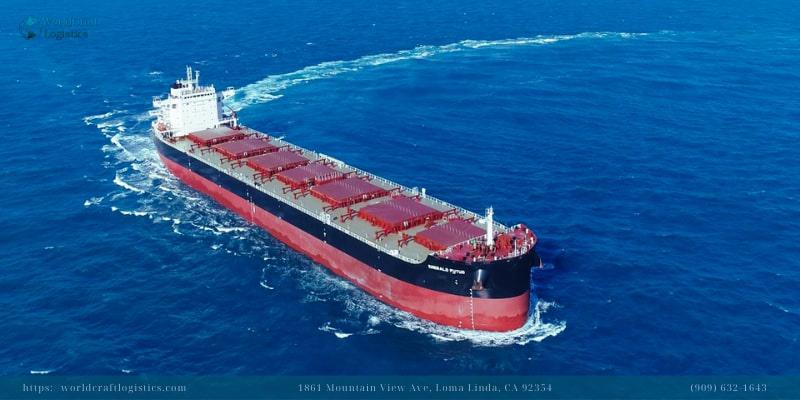
Unpackaged products are typically transported on bulk carriers. They transport massive amounts of products that are made of a single commodity, such as wood, grain, ore, and fertilizers. In addition, they move raw goods, including cement, coal, and machinery.
The following groups comprise bulk carriers:
Capesize: The largest dry freight ship in terms of size. Suitable for transporting at least 110,000 tonnes of raw materials, primarily grain or ore. It makes up 9% of the bulk carrier fleet globally.
Panamax: The Panama Canal's size restrictions define this type of ship that transits the canal. With a normal cargo capacity of 60,000 tonnes for the older Panamax and nearly twice that for the New Panamax, both vessels have draughts of 40 to 42 feet. consists of around 19% of the fleet of bulk carriers.
Handymax: Approximately 24% of the world's fleet of bulk carriers is made up of Handymax, which has a 30 to 35-foot draught and a 37,000-ton cargo capacity.
Handysize: With a load capacity of 30,000 tonnes, the handysize class is smaller than the handymax class. They make up 48% of the fleet of bulk carriers.
Find out information What is bulk cargo? Discover the essentials of bulk shipping
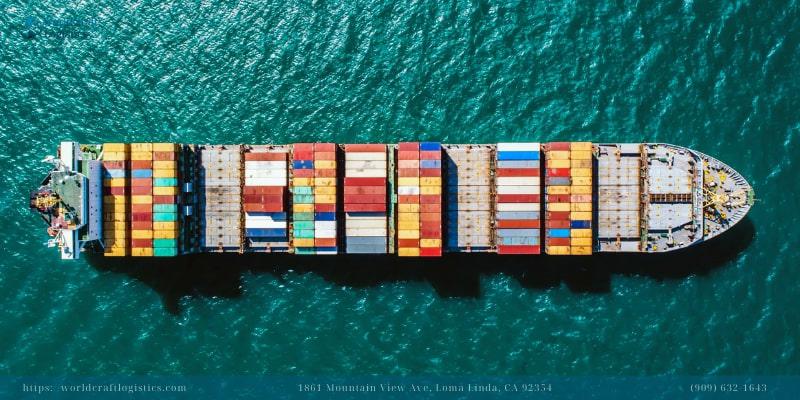
Large ships known as "container ships," often known as "box ships," are built to carry standard containers such as 10’, 20’, 40’ , 45’ , as well as High Cube (HC) , Open Top (OT), Flat Rack (FR), Garments-On-Hanger (GOH) or refrigerated containers.
Due to their frequent use in international transportation, container ships are typically highly automated, and some of the newest versions even produce no emissions.
At present, the great majority of non-bulk cargo is transported globally by these vessels. Consequently, container ships carry the majority of marine cargo.
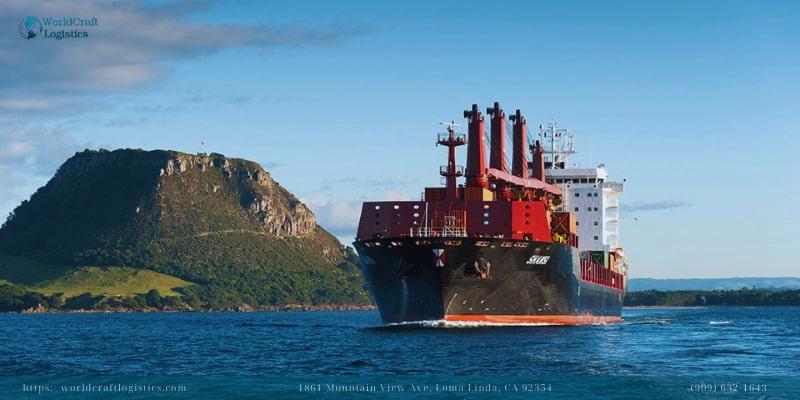
In contrast to container ships, general cargo ships are designed to handle loose-packaged cargo of various kinds. The number of holds and number of decks of a standard cargo ship might vary.
This type of ship has its own set of cranes that are a part of the ship and are used to load and unload cargo when the ship is in port. This is one of the ship's key characteristics.
The diversity of goods it can carry and its adaptability earn it the moniker of multi-purpose vessel.
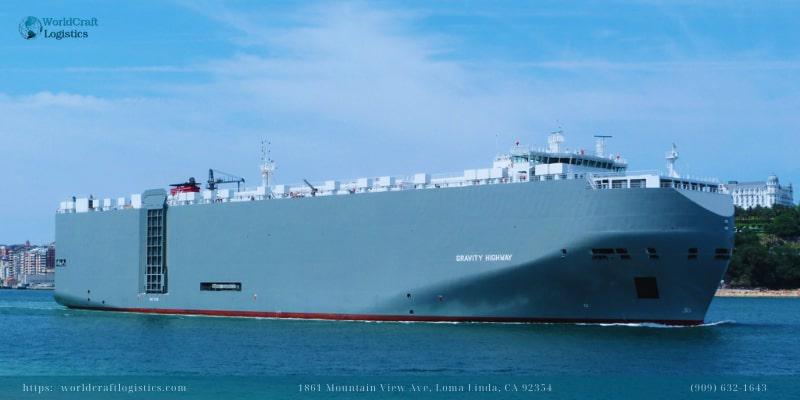
The term "Roll-on, Roll-off" (abbreviated as "Ro-Ro") refers to the process of loading and unloading goods from a vessel. These ships transport wheeled cargo that is loaded either via a platform truck or the vessel's own wheels. Typically, a ship has a series of decks that are connected via stairs, elevators, and doors at the bow or stern.
All types of vehicles, including trucks, wheeled freight, and even trailers hauling containers, can be transported on these ships. These vessels are designed with an anti-heeling system that connects the ballast water tanks with cross-pipes and pumps.
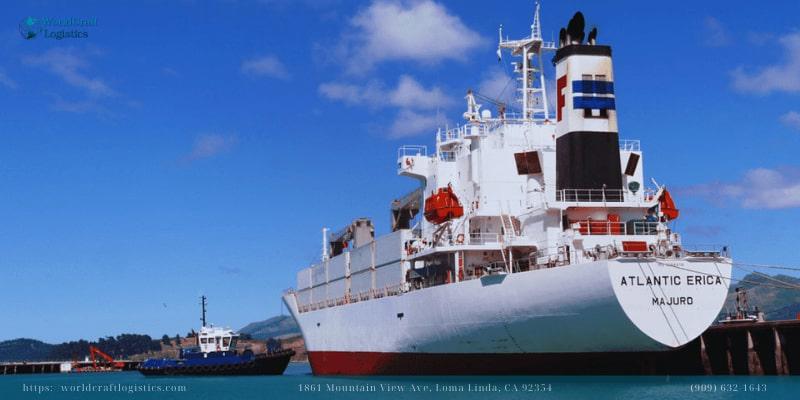
A reefer ship is a ship that carries perishable cargo and is chilled. To arrive at the port of destination in secure conditions, this specific cargo needs to be transported at a specific temperature.
The controlled temperature is between 12 and -30 degrees Celsius. The cargo space ranges between 100,000 and 600,000 square feet. The ships are typically painted white to reduce heat build-up since white reflects more light and generates less heat than other colors.
It is also important to note that these ships typically move more quickly than regular cargo ships because of the nature of the load.
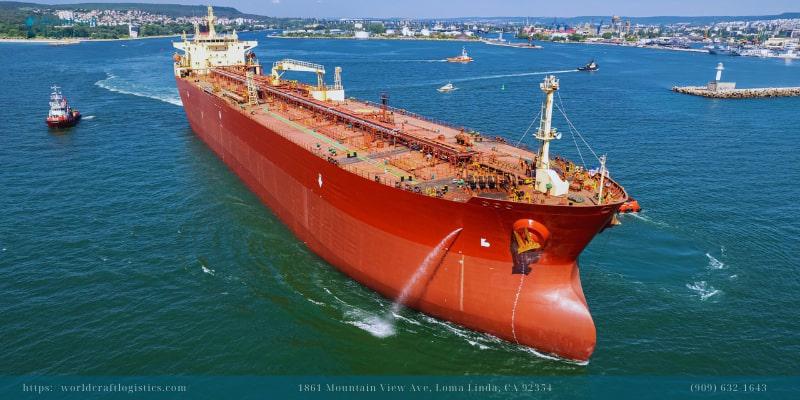
An enormous vessel built for the bulk transportation of oil or its byproducts. Offshore berthing is possible for oil and gas vessels. has a capacity of two million barrels of oil.
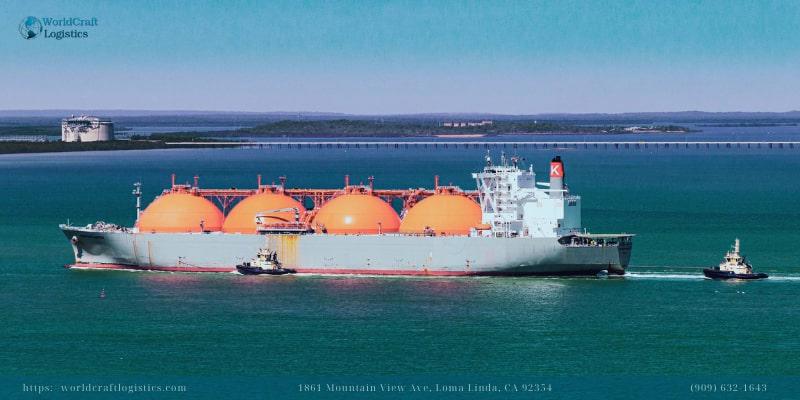
Ships made specifically to transport natural gas or liquefied gas. The nature of the cargo necessitates high-tech machinery and design, which raises the cost of building.
Gas tankers can be divided into two main categories: LNG (which transports liquefied gas at temperatures close to -170 °C) and LPG (which transports the cargo at -50 °C).
The vessel's main deck is lined with spherical tanks that are used to hold the chemical load.
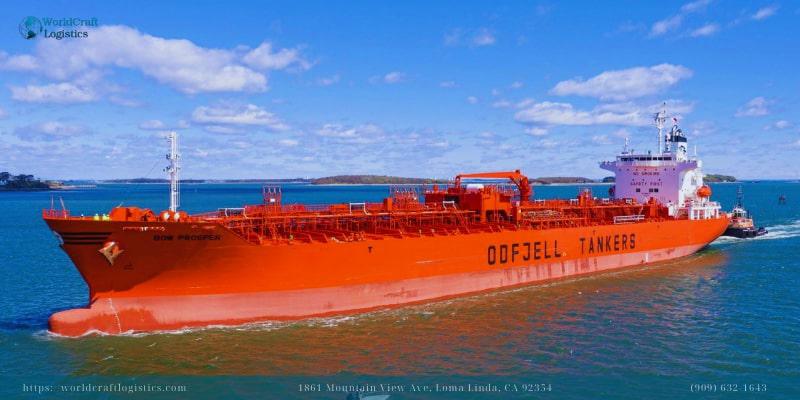
A vessel used for the bulk transportation of chemicals like phenol, gasoline, or ammonia, among others. These cargo ships, which range in size from 5,000 to 35,000 or even 50,000 DWT, are not the biggest. Tanks on chemical tankers are made of stainless steel and have a double shell.
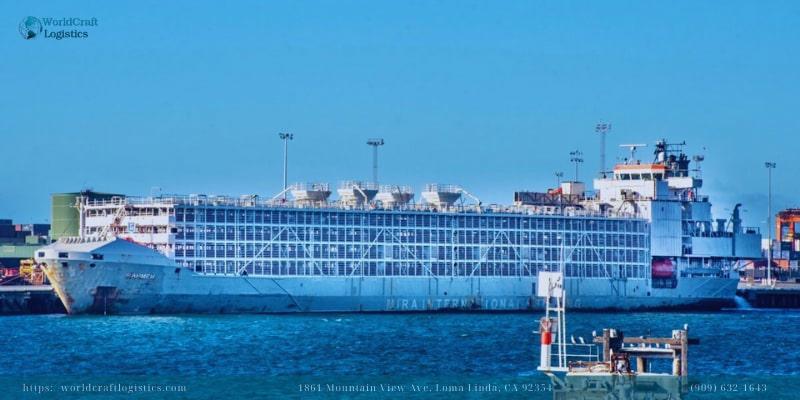
Particularly designed to transport several live animals and all of their travel necessities, including as food, medicine, and air ventilation. Some livestock trucks may have the pens erected on open decks.
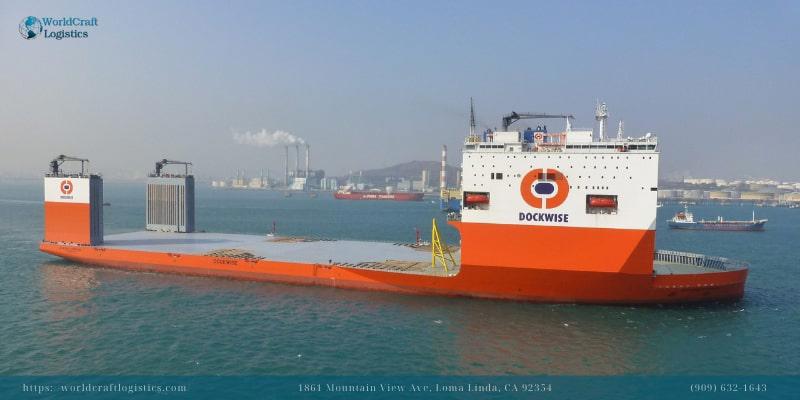
A very large or heavy load, such as industrial machinery, such as jet bridges or wind turbines, is what this item is designed to carry.
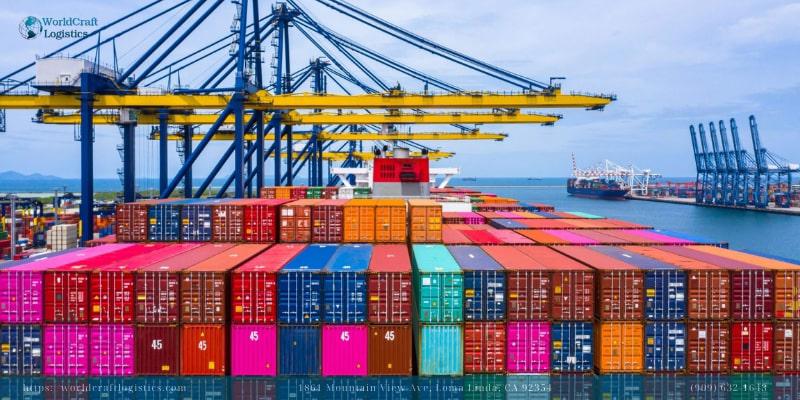
Aside from the numerous load types, there are other factors that can be used to classify cargo ships into different groups.
Cargo Liners operate between regular ports of call while transporting cargo and occasionally passengers, all while charging shippers a set contractual rate. Ocean cargo liners is another name for them.
On the other hand, some ships travel without a set itinerary or a list of places of call. These boats are chartered by numerous users, some of which also use them to transport passengers. Tramp ships are typically used by smaller maritime firms whose fleets are insufficient to plan liner cruises.
The size categories for vessels in service as of April 2020 are listed below. Deadweight tons (DWT) are the units used to quantify capacity:
Miniature Handy: 10,000 to 24,999 DWT
Size for portability: 28,000 to 40,000 DWT
Medium Handy: 35,000 to 39,999 DWT
40–50 DWT, according to handymax
Traditional Supramax vessel: 50,000–60,000 DWT
In order to pass through the Panama Canal, a ship must be at least 60,000 to 80,000 DWT in size, or Panamax.
Vessels post-Panamax: 79,000 to 99,999 DWT
Medium-sized oil tankers known as Aframax range in size from 75,000 to 115,000 DWT and are larger than Suezmax ships but smaller than Panamax ships.
Suezmax (the largest ship that can pass through the Suez Canal): approximately 150,000 DWT
Malaccamax: 280,000 to 300,000 DWT (the largest vessel that can pass through the Malacca Straits).
Seawaymax: 10,000 to 60,000 DWT (the largest vessel size permitted through the St. Lawrence Seaway's canal locks).
Ships classified as Capesize (those that can navigate the Cape of Good Hope and Cape Horn but not the Panama Canal or the Suez Canal) range in size from 100,000 to 129,999 DWT for a Mini Capesize to 130,000 to 199,999 DWT for a Standard Capesize to 200,000+ DWT for a Large Capesize.
VLCC (Very Large Crude Carrier): supertankers with a capacity of 150,000 to 320,000 DWT
Supertankers with a 320,000–550,000 DWT capacity are known as ULCCs (Ultra Large Crude Carriers).
Here is a table listing the biggest container ships in the world, with key details:
| Ship Name | Length | Width | Gross Tonnage (GT) | Container Capacity (TEUs) | Images | Operator | Famous For |
|---|---|---|---|---|---|---|---|
| Ever Given | 400 meters (1,312 feet) | 59 meters (193 feet) | 220,000 GT | 20,124 TEUs | 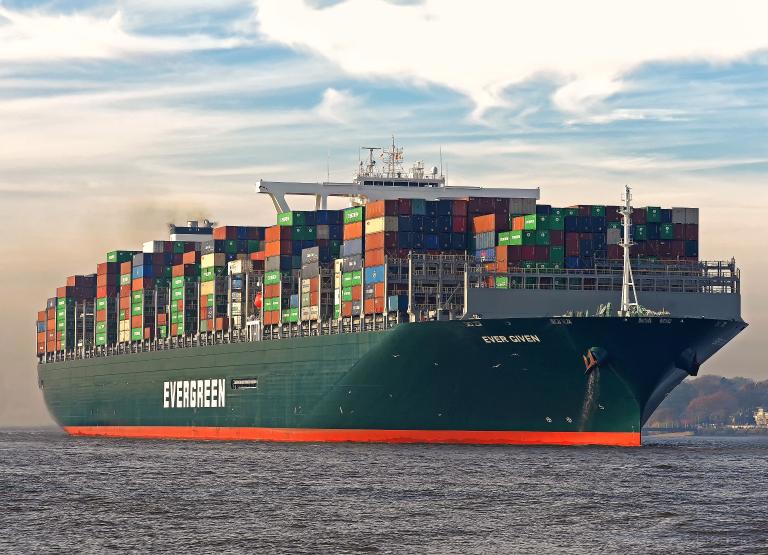 | Evergreen Marine Corporation | Stuck in the Suez Canal in 2021 |
| HMM Algeciras | 399 meters (1,309 feet) | 61 meters (200 feet) | 228,283 GT | 23,964 TEUs | 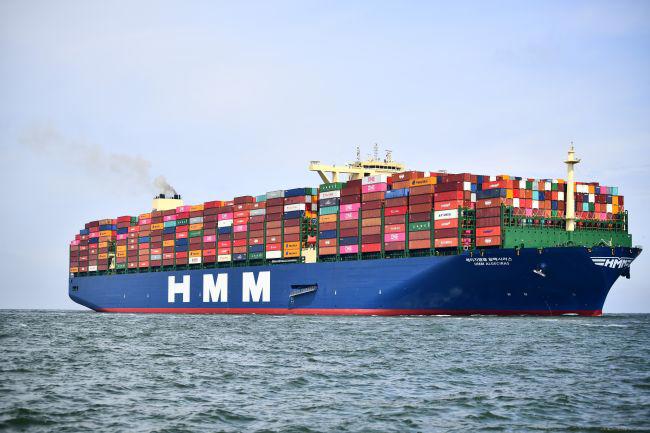 | Hyundai Merchant Marine (HMM) | Record holder for largest container ship at the time of delivery |
| MSC Gulsun | 400 meters (1,312 feet) | 61 meters (200 feet) | 232,618 GT | 23,756 TEUs | 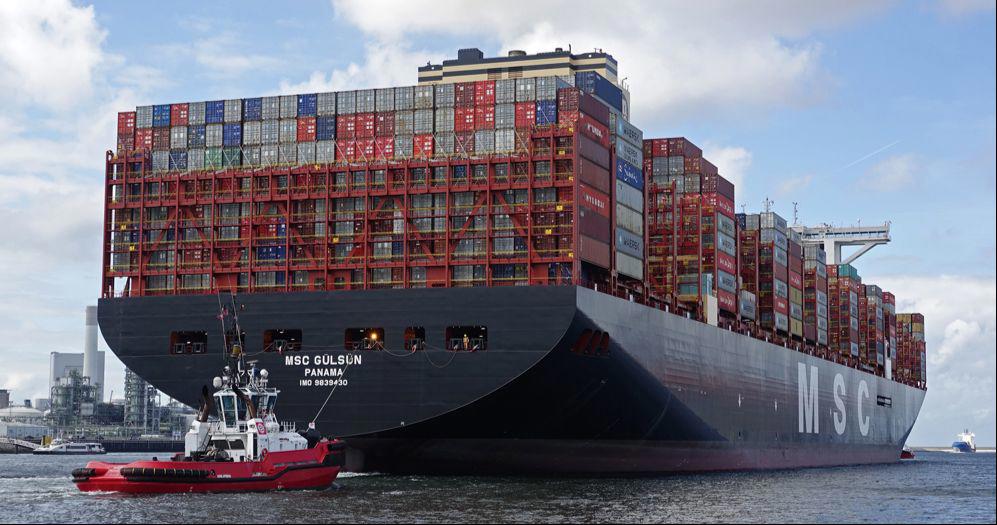 | Mediterranean Shipping Company | One of the largest container ships with high container capacity |
| OOCL Hong Kong | 399 meters (1,312 feet) | 58.8 meters (193 feet) | 210,890 GT | 21,413 TEUs | 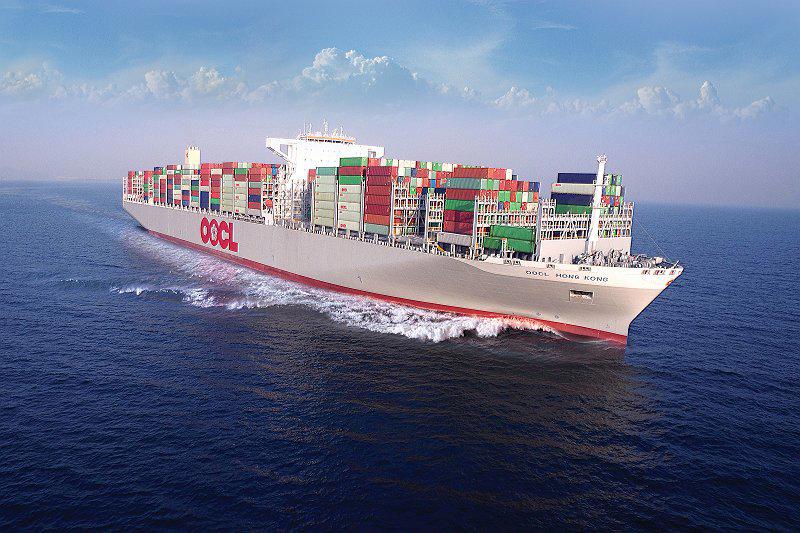 | Orient Overseas Container Line (OOCL) | Former largest container ship upon launch in 2017 |
| COSCO Shipping Universe | 400 meters (1,312 feet) | 58.6 meters (192 feet) | 210,890 GT | 21,237 TEUs | 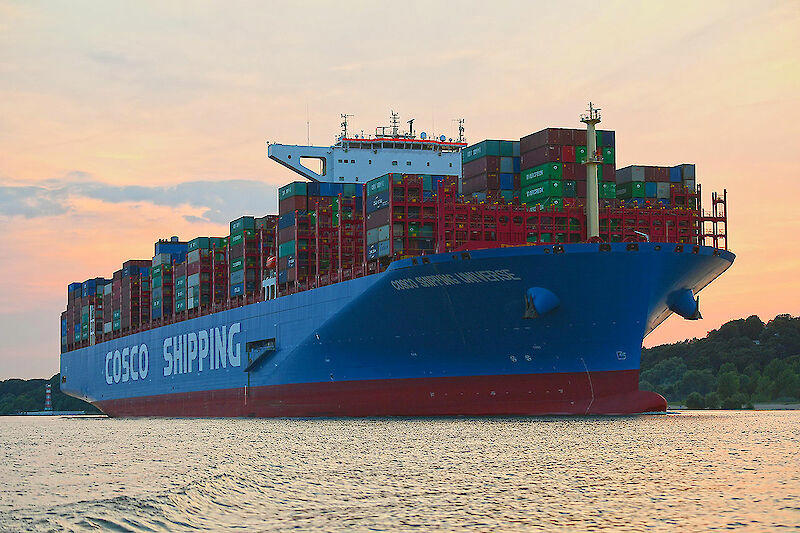 | COSCO Shipping Lines | Operated by COSCO Shipping, a leading Chinese container shipping company |
| CMA CGM Jacques Saade | 400 meters (1,312 feet) | 61 meters (200 feet) | 236,000 GT | 23,000 TEUs | 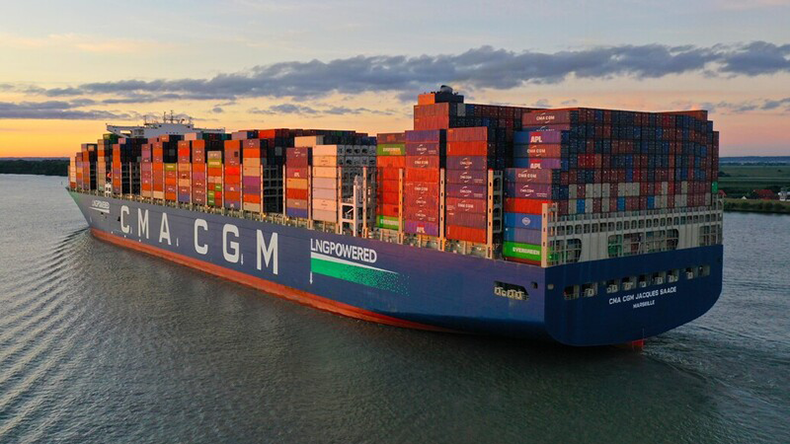 | CMA CGM | First LNG-powered mega-container ship |
| Madrid Maersk | 399 meters (1,310 feet) | 58.6 meters (193 feet) | 204,000 GT | 20,568 TEUs | 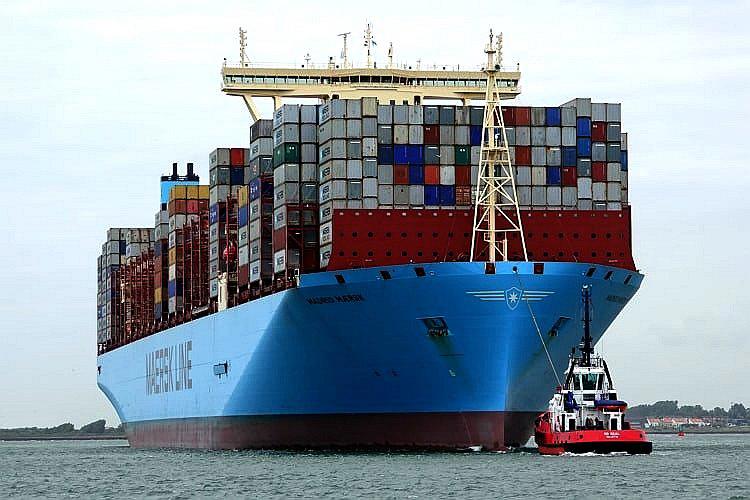 | Maersk Line | Part of Maersk's ultra-large container ship generation |
| The Benjamin Franklin | 398 meters (1,309 feet) | 54 meters (177 feet) | 157,000 GT | 18,000 TEUs | 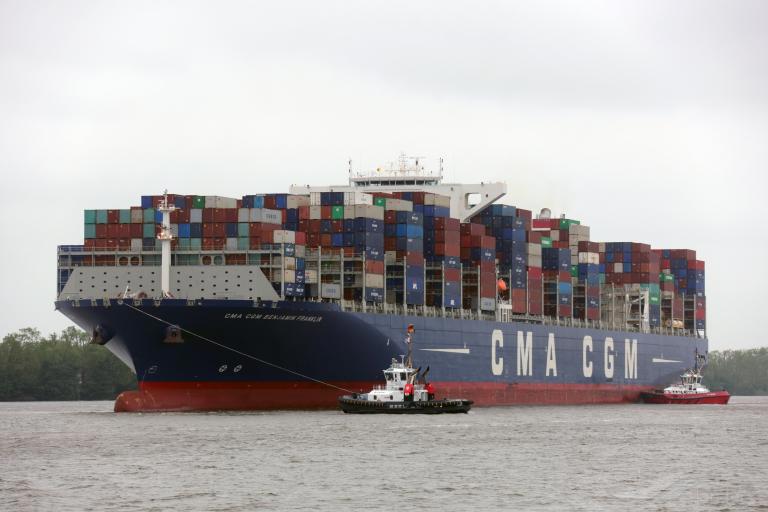 | CMA CGM | Largest ship to dock on the U.S. West Coast at the time |
This table provides an overview of the largest container ships, comparing their key specifications and highlighting some of their notable achievements.
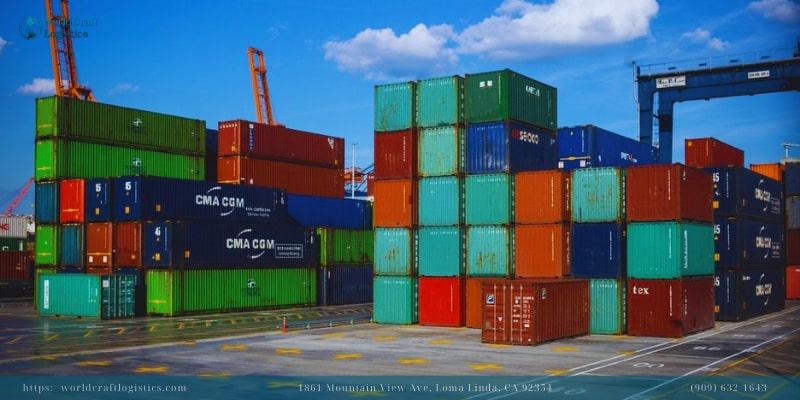
Bulk carriers, container ships, tankers, roll-on/roll-off (RO-RO) ships, refrigerated cargo ships, specialty cargo ships including LNG carriers and auto carriers, and multi-purpose boats are the most typical types of cargo ships used in international trade.
As implied by the name, these ships transport various goods such as food, chemicals, machinery, furniture, military vehicles, footwear, and clothing.
The shipping sector is adjusting to meet the rising demand for ecologically friendly and sustainable shipping solutions. This covers the utilization of more energy-efficient vessels, the use of alternative fuels, and the installation of equipment for waste disposal and recycling onboard cargo ships.
Cargo ships can be divided into five categories based on the cargo they can carry. Bulk carriers, general cargo ships, multipurpose ships, oil tankers, gas carriers, reefer ships, RORO Ships, and livestock ships are some of these.
The Ever Ace is the world's biggest cargo ship. With around 3267 containers carried in a single trip, it is the record holder. These were discharged at Felixstowe in Suffolk, the largest and busiest port in the United Kingdom.
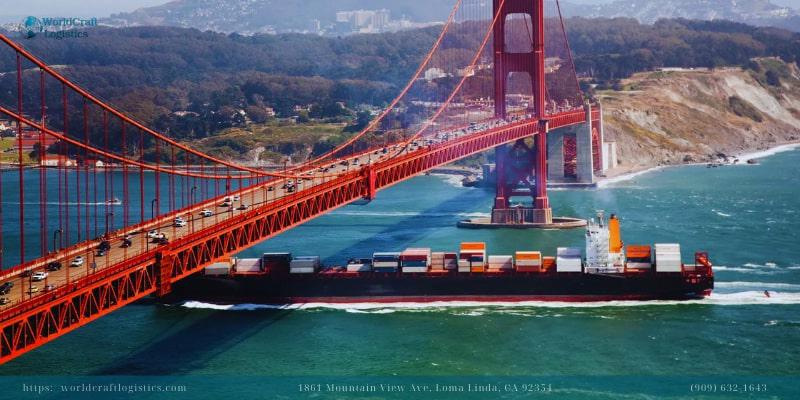
Fruit, vegetables, and frozen meals are examples of perishable items that need to be transported on refrigerated cargo ships, sometimes referred to as reefers.
When it comes to the requirements for various cargo ship types and the requirements of your company, Suisca Group is prepared to offer all solutions and all responses. Dedicated staff working around-the-clock, dependable service, and the care and expertise that come from more than 30 years of experience. Regardless of where you are, Suisca Group is your marine ally. Please contact us, and a member of our team of experts will assist you in locating the right solution.
SEO
Digital Marketing/SEO Specialist
Simon Mang is an SEO and Digital Marketing expert at Wordcraft Logistics. With many years of experience in the field of digital marketing, he has shaped and built strategies to effectively promote Wordcraft Logistics' online presence. With a deep understanding of the logistics industry, I have shared more than 500 specialized articles on many different topics.

Hot News
08/05/2024
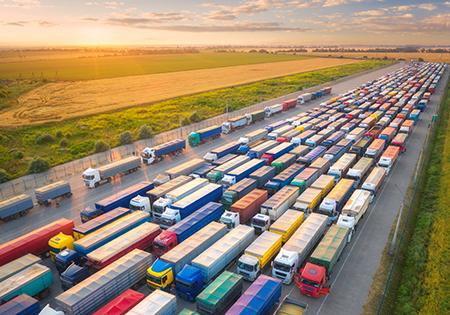
Hot News
02/23/2023

Hot News
02/23/2023

Hot News
02/06/2023
Hot News
02/07/2023